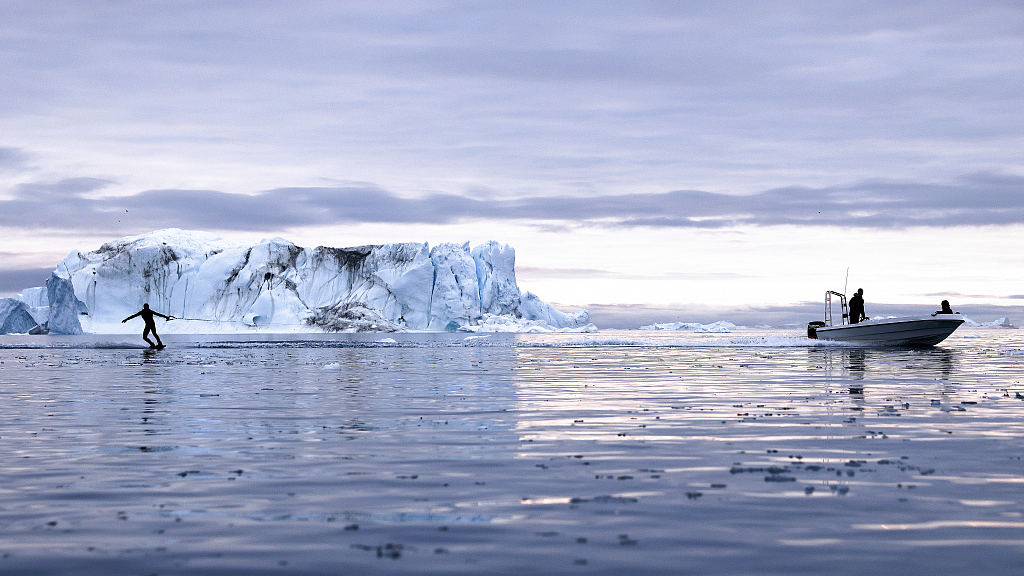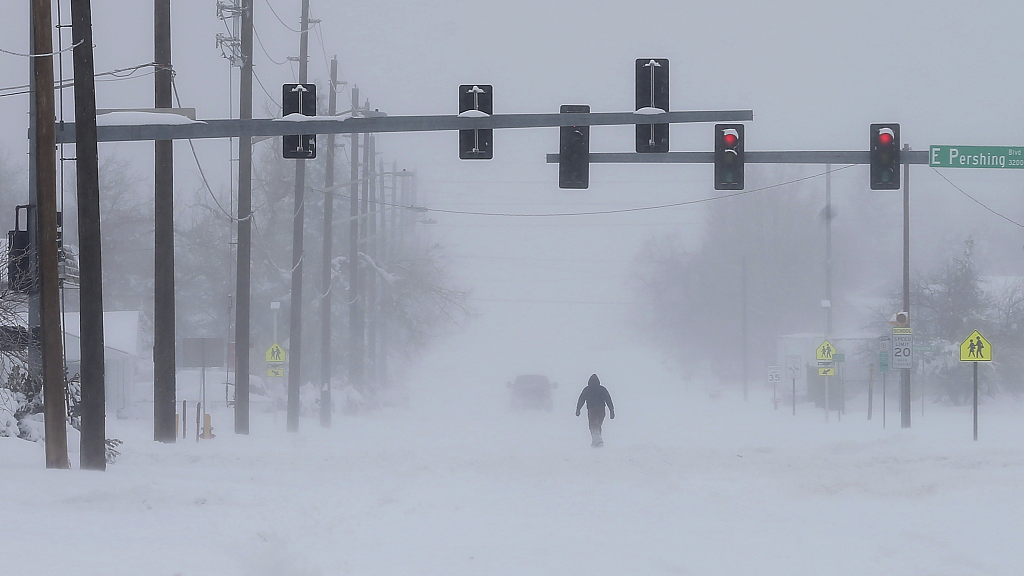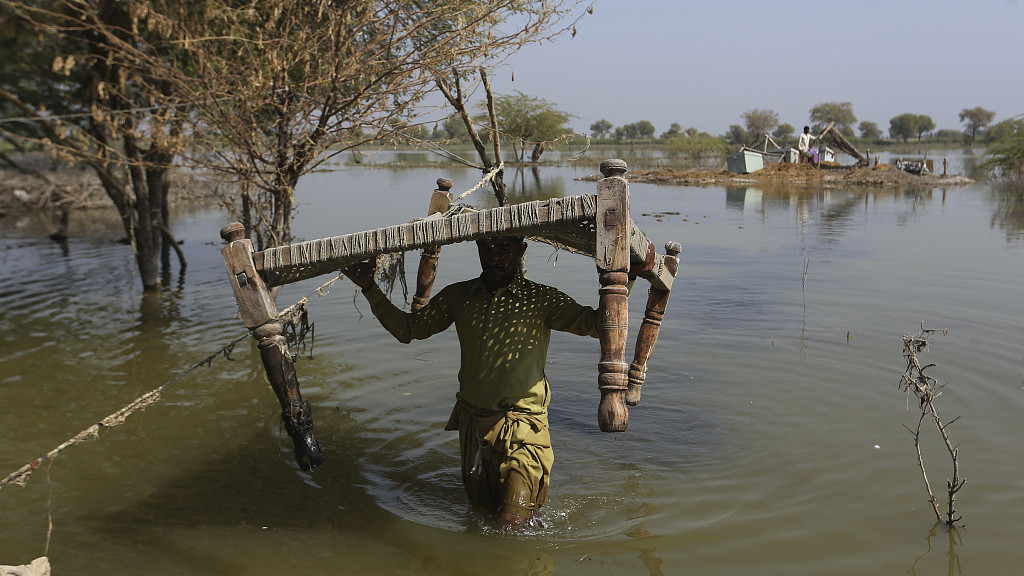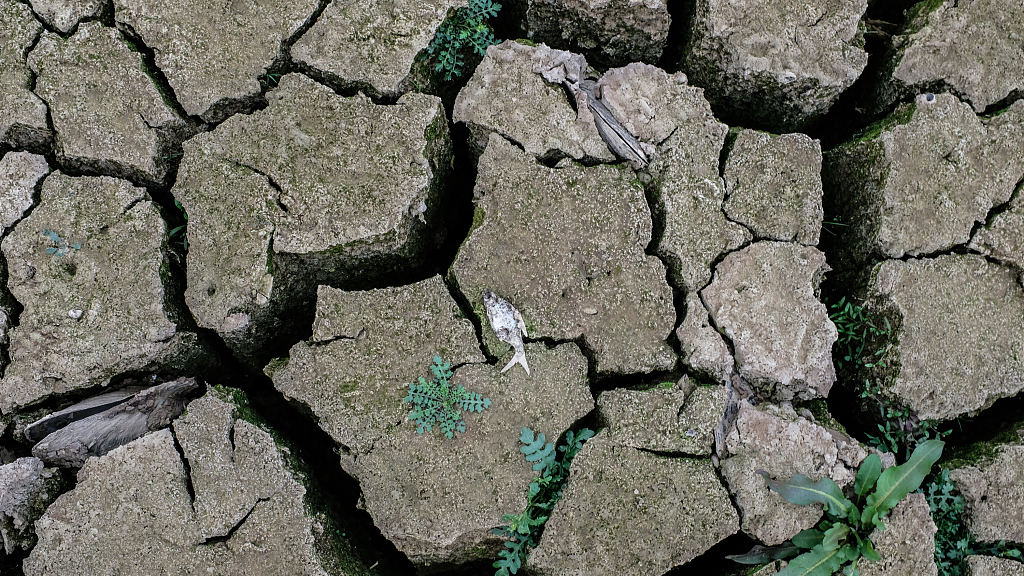
Editor's note: "Shared by Nature" invites experts and scholars from around the world to share their knowledge of major issues in nature, such as climate change, biodiversity conservation and environmental protection. How do we address global climate change? Zhang Xingying, deputy director general at the Department of Science, Technology and Climate Change at China Meteorological Administration, talked to CGTN Nature.
The annual Boao Forum for Asia is underway in Boao, south China's Hainan Province from March 28 to 31. The conference covers various topics such as carbon neutrality, green energy and climate change. As part of its broader efforts to promote sustainable development and combat climate change, the Boao Forum for Asia is stepping further in green development this year.
The Sixth Assessment Report of the Intergovernmental Panel on Climate Change (IPCC) states that Earth's climate system is experiencing significant warming, with an unprecedented rate of temperature rise in the last 50 years.
"China is acutely vulnerable to climate change. Heavy precipitation, persistent extreme drought, cold waves and compound weather disasters occur from time to time, which are very likely to cause significant economic losses or casualties. Therefore, in this Boao Forum, we need to pay attention to extreme weather and climate change," Zhang said.
"In climate communication, we also need to pay attention to the changes in climate tipping points," he added.
What is the tipping point? William Nordhaus, the 2018 Nobel laureate in economics, had the following analogy: a canoe floating on water can still maintain balance when it starts to tilt into the water, but when the tilt angle reaches a certain point, the canoe will capsize - the tilt angle that causes this irreversible consequence is the tipping point. Similarly, the climate tipping point is the abrupt change point. IPCC defines tipping points as "critical thresholds in a system that, when exceeded, can lead to a significant change in the state of the system, often with an understanding that the change is irreversible."
According to the data from China Meteorological Administration, the last decade has been the warmest in the past, and many indicators of climate change have been setting new records.
"Global warming will lead to a more unstable climate crisis, and breaking through these thresholds could lead to a dire situation," Zhang said.

A person water skis in Disko Bay near icebergs that calved from the Sermeq Kujalleq glacier on September 04, 2021, in Ilulissat, Greenland. /CFP
A person water skis in Disko Bay near icebergs that calved from the Sermeq Kujalleq glacier on September 04, 2021, in Ilulissat, Greenland. /CFP
"For example, the tipping point that triggers the full extinction of the Greenland ice shelf is a warming of 0.8°C to 3.0°C. The threshold that triggers the total extinction of the West Antarctic ice shelf is a warming of 1.0°C to 3.0°C. There are currently 16 recognized global climate tipping points, and if warming exceeds 1.5°C or higher, more climate tipping points will be activated and the climate system will collapse," he explained.
The high frequency of global extreme events also causes the tendency of compound disasters. Shows by China Meteorological Administration that from 2010-2019 compared to 1970-1979, the number of global extreme weather and climate disasters increased five fold and disaster losses increased seven fold. From 2000-2021, Asia suffered 287 extreme events, accounting for 65.1 percent of global extreme events, with heavy rainfall and flooding accounting for 39 percent of the global total.

A powerful late winter snowstorm intensified over the central Rocky Mountains with heavy snow and wind leading to airport and road closures, power outages and avalanche warnings in parts of Colorado, Wyoming and Nebraska. /CFP
A powerful late winter snowstorm intensified over the central Rocky Mountains with heavy snow and wind leading to airport and road closures, power outages and avalanche warnings in parts of Colorado, Wyoming and Nebraska. /CFP
In February 2021, North American winter storm "Uri," a rare occurrence since 1895, caused severe snowstorms and extreme cold weather across the whole country, causing the lowest temperatures in Texas to drop to -22°C, triggering a brief energy supply crisis.

Travelers wait at Liverpool Street railway station during a heatwave in London, UK, on July 18, 2022. /CFP
Travelers wait at Liverpool Street railway station during a heatwave in London, UK, on July 18, 2022. /CFP
Extreme heat waves and meteorological droughts in Europe during the summer of 2022 caused forest fires in several countries. Prolonged heat adversely affects energy security, food security and human health, and a state of emergency is declared in many countries.

Villagers retrieve belongings, which they kept on higher grounds surrounded by floodwaters, at a village in Sohbat Pur, a flood-hit district of Baluchistan province, Pakistan, Oct. 25, 2022. /CFP
Villagers retrieve belongings, which they kept on higher grounds surrounded by floodwaters, at a village in Sohbat Pur, a flood-hit district of Baluchistan province, Pakistan, Oct. 25, 2022. /CFP
The devastating floods in Pakistan in 2022 caused a humanitarian and economic crises when a third of the country was inundated by floods caused by continuous heavy rainfall.
Extreme weather and climate events caused by warming are already occurring in multiple regions of the globe, and this change will continue and intensify. "Without global reductions in carbon dioxide and other greenhouse gas emissions in the coming decades, global warming will exceed 1.5°C and 2°C within this century," Zhang said.

A dry river in southern China. /CFP
A dry river in southern China. /CFP
He also predicted that the average temperature in China will continue to rise in the future. "Around 2035, the likelihood of extreme heat events similar to the 2013 summer in east-central China will be frequent. By the end of the 21st century, the probability of extreme heat events will be tens of times higher than at present. Extreme drought events will increase in the south and decrease in the north, with the most significant decrease in the eastern northwest, with a maximum decrease of 15 percent," Zhang said.
In addition, extreme events of high temperature and drought will escalate in the northwestern region, and the area with high-temperature disaster risk levels will increase significantly. "By about 2035, the area of the higher-risk areas will increase from 1.4 percent of the whole country in 1986-2005 to 9.1 percent, and the areas with relatively high-risk levels are mainly concentrated in the North China Plain, middle and lower reaches of Yangtze River, Sichuan Basin and Pearl River Delta" he added.
Climate change has increased the frequency and severity of extreme weather events, and the IPCC Synthesis Report states that continued global warming in the future will result in many climate-related risks that are higher than those assessed in the Fifth Assessment Report. Therefore, all countries have recognized that coping with climate change is one of the most serious challenges.
"First, the international community must fully implement all international climate norms and obligations, from the United Nations Framework Convention on Climate Change to the Paris Agreement to the Glasgow Climate Pact. Second, we must adhere to multilateral mechanisms and establish a sense of the community of human destiny. Developed countries should continue to take the lead in reducing emissions and increase financial and technical support for developing countries to address climate change. Third, the international community should promote the implementation of the 2030 agenda for sustainable development through consultation to meet the interests of all," Zhang said.
The Chinese government has actively carried out international climate cooperation, and strengthened coordination with all parties. China has also helped other developing countries that are more affected by climate change and less able to cope with it.
According to the data from China Meteorological Administration, from 2012 to 2021, China supported an average economic growth of 6.5 percent with an average annual energy consumption growth rate of 3 percent, CO2 emissions per unit of GDP decreased by about 34.4 percent compared to 2012, and energy consumption per unit of GDP decreased by 26.3 percent compared to 2012, with a cumulative energy saving of about 1.4 billion tons of standard coal and a corresponding reduction of 3.7 billion tons of CO2. The share of coal consumption declined from 65.8 percent in 2014 to 56 percent in 2021, an average annual decline of 1.4 percentage points, the fastest decline in history. By the end of 2021, China's share of non-fossil energy has reached 16.6 percent, and renewable energy accounts for more than one-third of the world's installed capacity.
"These figures show that China has embarked on a green and low-carbon sustainable development path that is in line with its own national conditions, providing a reference for the low-carbon transition in developing countries and making an important contribution to global climate governance," Zhang said.
What else should we do? As citizens, we need to enlarge our experience of climate change and carbon emission reduction and consciously relate it to our daily lives.
"We should understand the direct and indirect emissions of our daily life, and learn about the energy consumption and emission information of the products. We could reduce the carbon emissions and environmental impact through the change of consumption patterns," Zhang added.
(If you want to contribute and have specific expertise, please contact us at nature@cgtn.com.)